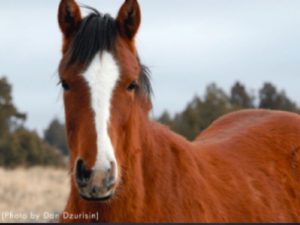Horses and Sequencing! What do those have to do with each other, and how does this improve my English? Your question couldn’t be better. In this episode, we introduce Unit 2, which has the theme of Animals. We opened the unit with two episodes on Horses, and in Episode 33, we sequence the steps in preparing a horse to ride. Much of this episode was produced in the field, which makes it relevant to the current theme.
Watching Episode 33

To watch Episode 33, click the link that follows.

View by Segment
Click on Segment One to watch the first segment of this Episode
Video Clips used in Episode 33
On our You Tube Channel, watch Horses Part 1
Watch the same video ad-free on archive.org. Click here to watch or download.
Horses Part 2 on You Tube.
For the same video of archive.org, click here.
Language Objectives
Sequencing Skills:
We used the activity of preparing a horse for a riding session to learn or practice using English to sequence action.
The steps were to brush the horse, check its hooves, put on a saddle blanket, add a saddle, and tighten the girth on the saddle for a snug fit.
After the basic sequencing of steps, we ramped up our language level to go beyond the basic use of: first, then, next, and finally. See the instructional materials below.
Academic Content Objectives
Science: Apply general information about an animal to practical experience (Considerations in preparing a horse for riding). Agriculture: Explain how to apply horse care principles to riding a horse with a western saddle. Identify the different gaits of horseback riding.
Credits
Alex McGlassen: Videography
Gary Mark Roberts: Videography
Denise Ross: Location
Materials in Episode 33
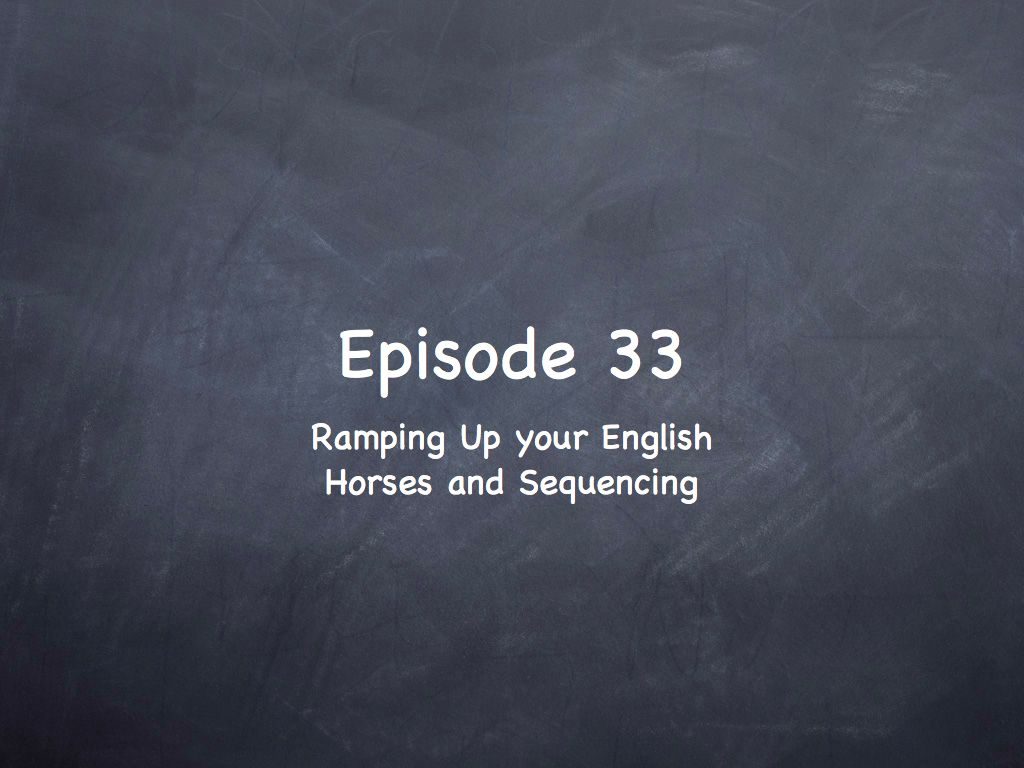
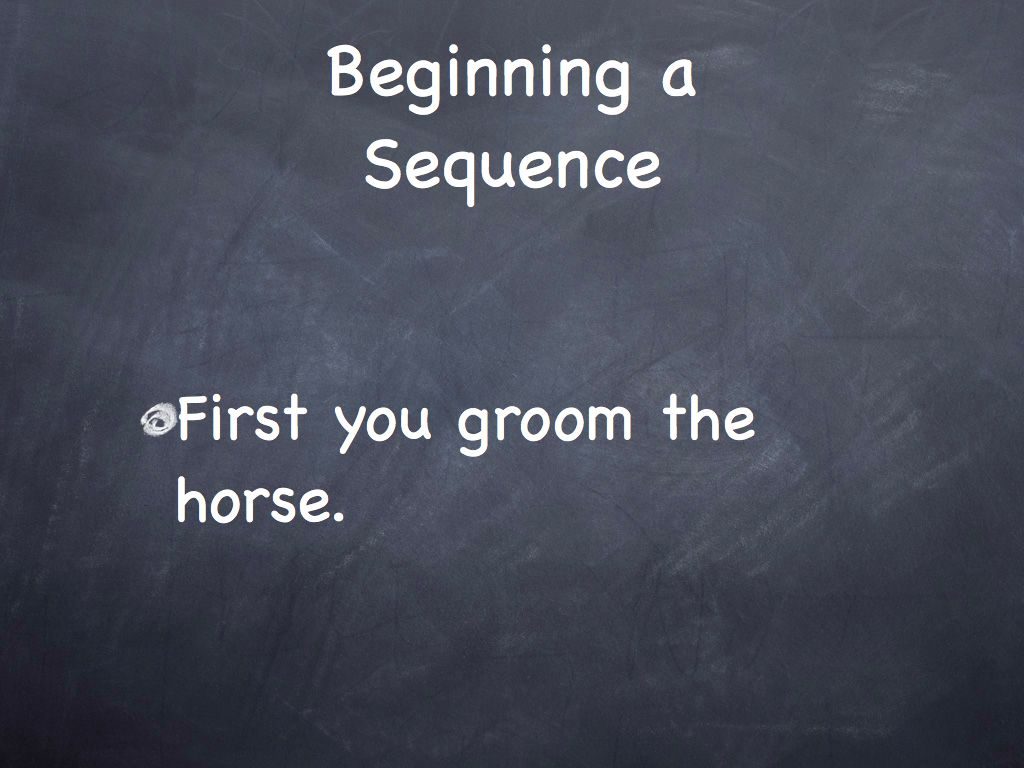


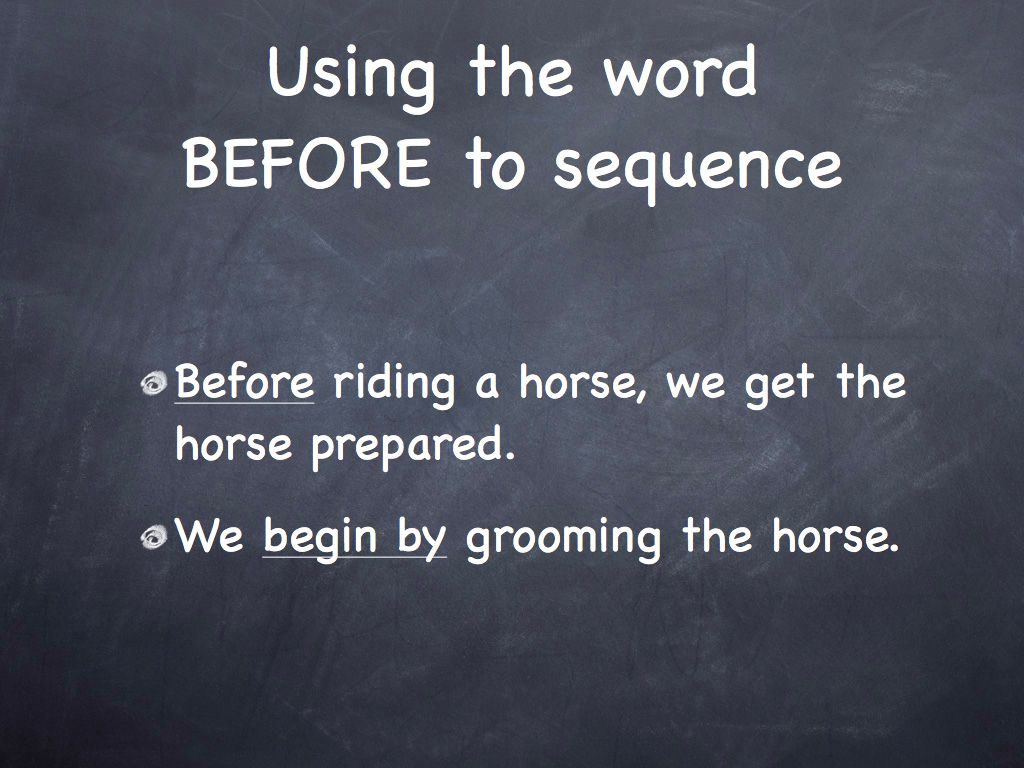

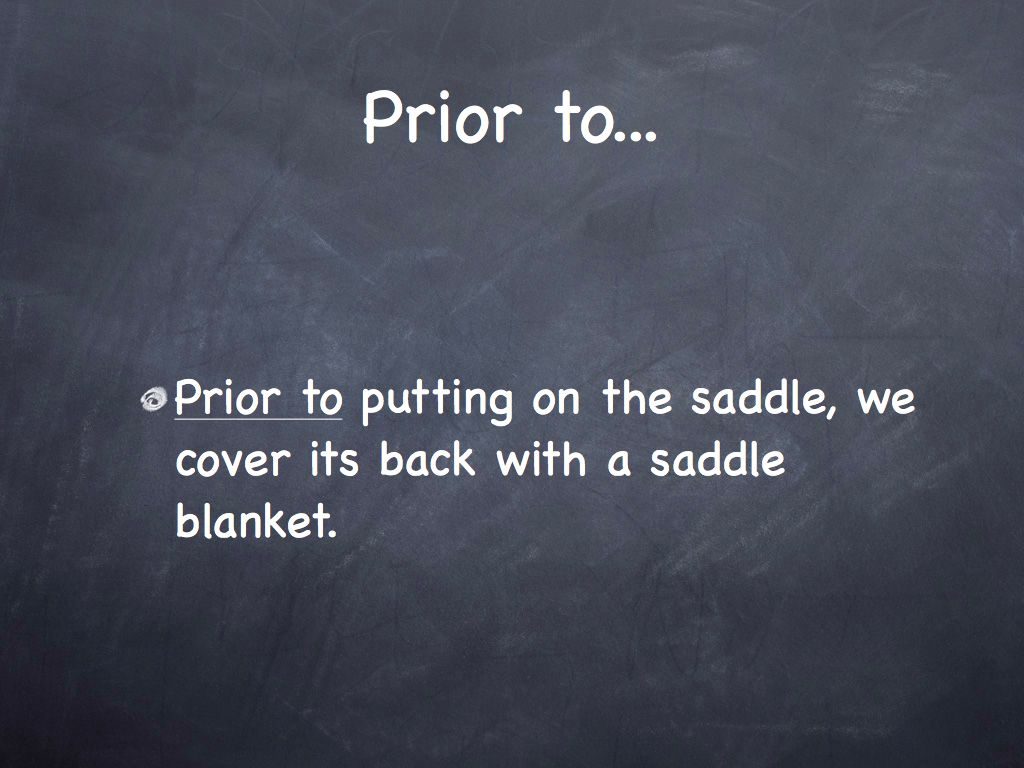
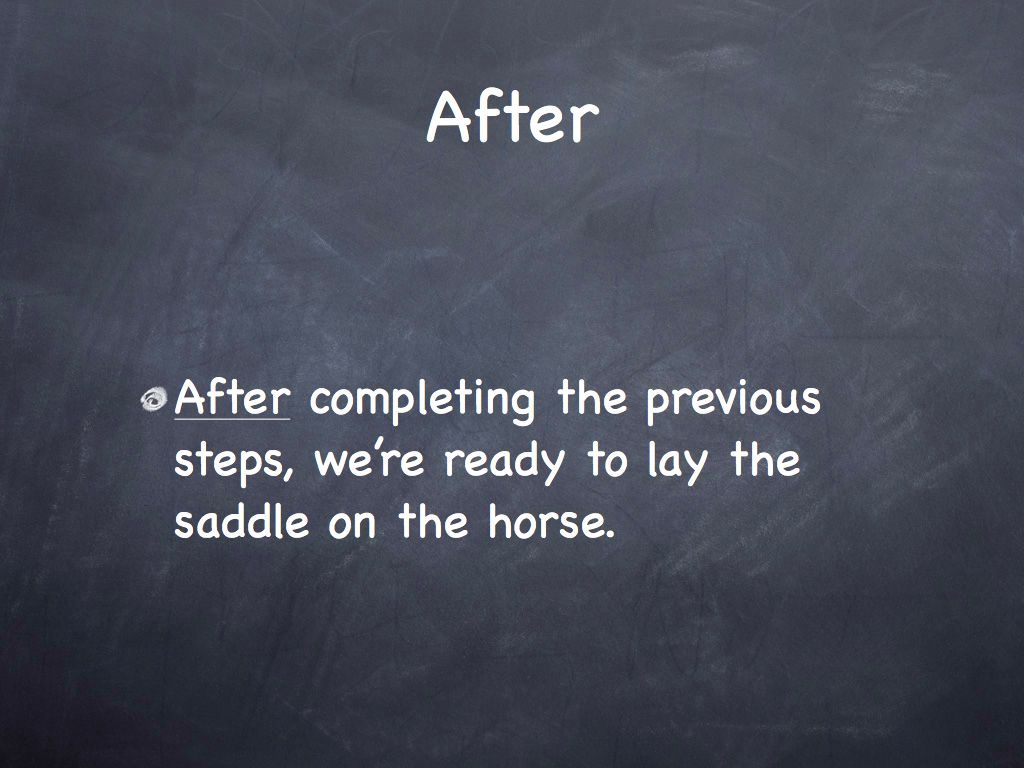
Next Episode
See Episode 34 to learn about vocabulary related to horses and some thiughts from people who own and ride horses.
